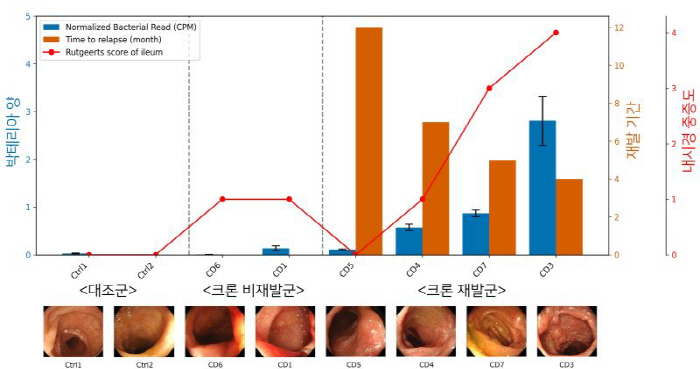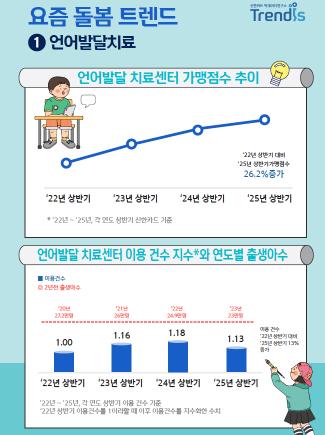Development of technology for simultaneous analysis of microorganisms and human genes in intestinal tissues...Expectations for predicting Crohn's disease prognosis and treatment strategies
Sep 08, 2025
|
Professor Park Yoo-rang, lecturer Jang Soo-young, and Professor Go Hong of the Department of Pediatric Gastroenterology at Severance Children's Hospital announced on the 8th that they have developed a microorganism-human gene simultaneous analysis technology in intestinal tissues, which allows them to predict the prognosis and set treatment strategies for Crohn's disease.
The results of the study were published in the international academic journal 'Microbiome (IF 12.7)'.
Crohn's disease is an intractable disease in which symptoms such as bloody excrement, abdominal pain, and diarrhea are chronic due to inflammation in the digestive system, including the small intestine and large intestine. If chronic inflammation is not controlled, it can lead to serious complications such as intestinal perforation and stenosis.
Crohn's disease is known to be caused by abnormal interactions between the gut microbiota and the human immune system. Identifying the interaction of intestinal microorganisms with the human immune system at the actual cellular level is important for understanding the exact pathogenesis of Crohn's disease and establishing effective therapeutic strategies.
In addition, if we accurately identify and utilize beneficial bacterial strains that can inhibit Crohn's disease development or alleviate symptoms in the intestine, we can also develop microbiological-based treatments.
The research team developed a 'micro-human gene expression profiling pipeline' that can identify the location of bacteria within intestinal tissues and simultaneously confirm human intestinal cell gene expression.
This technology simultaneously detects RNA expression of human tissues as well as RNA from microorganisms penetrating human tissues and analyzes their association. Through this, it is possible to confirm the response of human cells in the distribution of specific microorganisms with a high level of resolution.
As a result of analyzing the intestinal tissue of Crohn's disease patients using the developed pipeline technology, it was confirmed that the distribution of microorganisms in Crohn's disease tissue was significantly increased compared to normal intestinal tissue. In particular, the distribution of microorganisms was found to increase even more significantly in areas with severe inflammation. In addition, the degree of distribution of these microorganisms showed a strong relationship with the timing of the patient's disease recurrence and the severity confirmed by endoscopy, confirming the possibility of predicting the prognosis of Crohn's disease patients through the distribution of microorganisms.
The research team confirmed the degree of cell death of human cells according to the presence of microorganisms. This identified a number of beneficial bacterial and pathogenic candidates associated with Crohn's disease, some of which also discovered new therapeutic candidate bacterial monarchs that had not previously been reported. In addition, RNA that is induced or inhibited in expression depending on the type of microorganism was identified to estimate the interaction between microorganisms and human cells in the intestine.
Professor Ko Hong said, `The microbial profiling technology in intestinal tissues developed in this study is a method that can be applied not only to Crohn's disease but also to research on various microbial-related diseases.' `In particular, it is expected that the identification of beneficial bacteria and pathogens can be used to develop microbial-based treatment strategies, predict patient prognosis, and set treatment directions.'
Meanwhile, this study was conducted with the support of the Korea Health Industry Promotion Agency's convergence doctor scientist training project, the Ministry of Trade, Industry and Energy and the Korea Institute of Industrial Technology Planning and Evaluation, and the Ministry of Science and ICT and the Korea Research Foundation's bio-medical technology development project.
|
This article was translated by Naver AI translator.















